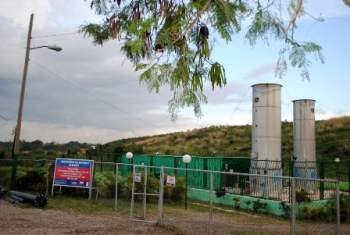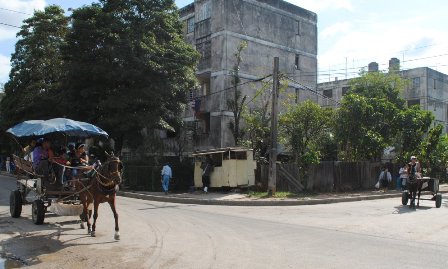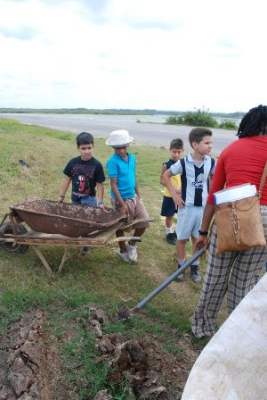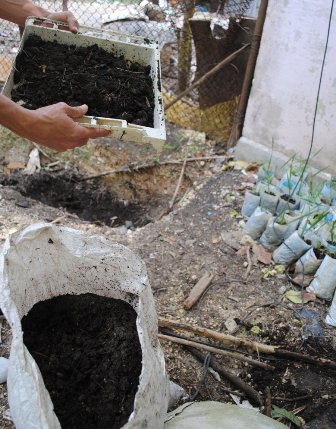Return to the 100th Street Dump

Erasmo Calzadilla
Returning to dealing with the “pretty” side of the city, I looked for information on the dump and I found out through daily newspapers that, with great fanfare, a state-of-the-art biogas plant had been set up there in 2008.
Obtained thanks to a collaborative effort with the United Nation’s Organization for Industrial Development, the plant has a capacity to process 20 of the 180 tons of organic matter that enter the dump daily. Its primary function is to prevent methane gas — with its potent hothouse effects — from passing directly into the atmosphere; the plant also reduces the quantity of residuals that come onto the grounds.

Wanting to learn more about this project, and with purpose of picking up a sick dog that I found on my previous visit, I put on my boots and returned to this butt hole of the city. On this occasion I was accompanied by Irina (another blogger with Havana Times); she took some impressive photos and interviewed a woman who made a living rummaging through the garbage.
After a good walk, we finally made it to the plant, where the colorless smoke from its chimneys provided evidence that it really did work. I was glad to know that something is being done to decontaminate the dump and to mitigate its effects, but then questions began to emerge.

In the newspapers the project was enthusiastically welcomed with no criticisms raised, but was it really the best alternative? The application of cutting-edge technology is always the best option, at least that’s what the technocrats will tell you.

The biogas plant at the dump implies the transfer of the organic matter from distant corners of the city to feed it (with remains of cuttings, etc.). A caravan of trucks spewing clouds of CO2 is responsible for this daily task in a circumstance in which petroleum is increasingly expensive and difficult to find.
In addition, we have to ask what we’re going to do when this automated plant breaks down or wears out. Are we going to continue importing parts from Germany or China? Added to that, hundreds of tons of solid residuals go untreated because the plant is unable to cope with the quantity produced.

Taking all this into consideration, I wondered if it wouldn’t be more interesting and simpler to take advantage of organic waste by making compost with it in a more localized manner. The infrastructure necessary for this is minimal; a flatbed cart pulled by a horse or a bicycle would be the most complicated “apparatus,” and there are plenty of these on the periphery of the city. It could also be a new source of employment and would help to establish habits and a culture of recycling.
Compost generated like this could take advantage of it coming from within the neighborhood where it’s used. This differs from that which is produced at the super-plant, which has to be transferred back to the municipalities loaded in oil trucks.
To demonstrate that this is indeed possible, even without a bicycle or a horse, but with the arms and strength of friendship, in their free time a group of guys on the block is taking charge of collecting vegetal waste. With it we’ve created a compost heap which, while still not having been put to the test, feels exquisite to the touch.
Doesn’t that make you want to join in?
—
Note: I didn’t find the dog, but I’ll go back to look for it again.
